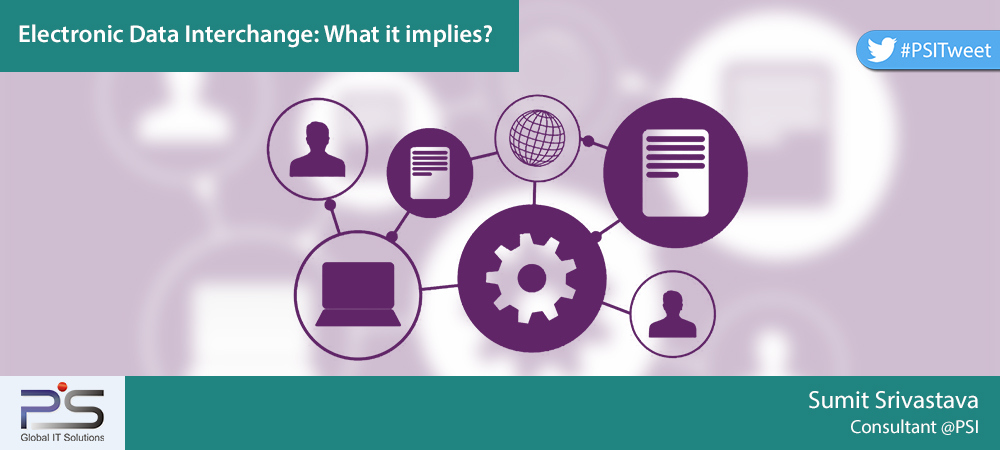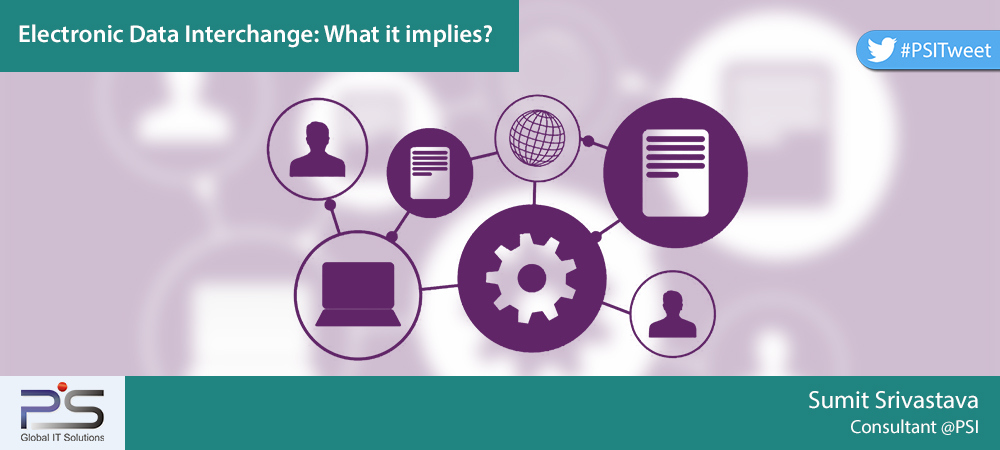
What is EDI?
In today’s fast world, electronic media is extensively used to exchanging information. Gone are the days when people used to send information or communicate through post. Now business documents are sent from one computer to another.
EDI is a simple abbreviation for Electronic Data Interchange. It is defined as a system or process for exchange of business information with other entities by standardized message formatting, without the need for human intervention.
An EDI message contains a string of data elements. The data element is an individual item information within the document such as PO Number, PO Date etc. The entire string that is group of related data is called a data segment. One or more data segments framed by a header and trailer form a transaction set, which is the EDI unit of transmission (equivalent to a message). A transaction set often consists of what would usually be contained in a typical business document or form.
EDI eliminates postal mails, fax and email. There is no paper work involved.
A Manual process can be represented as follows:-

Whereas an EDI process can be represented as follows:-

Necessity of EDI
Agility has a direct relation with business growth. Now days implementing EDI is essential for maximum competitiveness and growth. It not only reduces costs and but also improves operational performance across the organization. It accelerates data exchange and sharpens accuracy.
EDI improves quality of data and provide ease in business processes and increases process speed, hence customers look for vendors with EDI mechanism in place.
Benefits associated with EDI
- Reduces transaction costs
- Improves productivity
- Reduces Business Process Cycle
- Improves Data Accuracy
- Eliminates manual data-entry errors
- Streamlines transaction process
- Improves Data Security
- Easy Data Auditing
Well, EDI is a vast subject and requires a thorough understanding. We will be discussing the other aspects in detail in the next article.
Image Courtesy: https://goo.gl/oqE57T
What is EDI?
In today’s fast world, electronic media is extensively used to exchanging information. Gone are the days when people used to send information or communicate through post. Now business documents are sent from one computer to another.
EDI is a simple abbreviation for Electronic Data Interchange. It is defined as a system or process for exchange of business information with other entities by standardized message formatting, without the need for human intervention.
An EDI message contains a string of data elements. The data element is an individual item information within the document such as PO Number, PO Date etc. The entire string that is group of related data is called a data segment. One or more data segments framed by a header and trailer form a transaction set, which is the EDI unit of transmission (equivalent to a message). A transaction set often consists of what would usually be contained in a typical business document or form.
EDI eliminates postal mails, fax and email. There is no paper work involved.
A Manual process can be represented as follows:-

Whereas an EDI process can be represented as follows:-

Necessity of EDI
Agility has a direct relation with business growth. Now days implementing EDI is essential for maximum competitiveness and growth. It not only reduces costs and but also improves operational performance across the organization. It accelerates data exchange and sharpens accuracy.
EDI improves quality of data and provide ease in business processes and increases process speed, hence customers look for vendors with EDI mechanism in place.
Benefits associated with EDI
- Reduces transaction costs
- Improves productivity
- Reduces Business Process Cycle
- Improves Data Accuracy
- Eliminates manual data-entry errors
- Streamlines transaction process
- Improves Data Security
- Easy Data Auditing
Well, EDI is a vast subject and requires a thorough understanding. We will be discussing the other aspects in detail in the next article.
Image Courtesy: https://goo.gl/oqE57T[:]








